Technical support portal
Situation Description
Users may encounter problems while working with the SmartPlayer platform. The detected issues need to be resolved. This is where the technical support department comes in. To facilitate the interaction process between the user and technical support specialists, it is recommended to adhere to the rules described in this article.
First Step
Upon encountering an issue with the SmartPlayer platform, the first thing a user should do is visit the technical support portal, available at link
On the first visit to the portal, the system will ask the user to log in. For authentication, the user needs to enter the login (e-mail) and password of the account linked to their company.
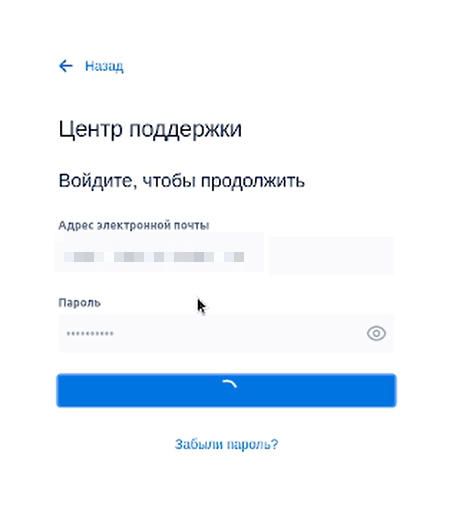
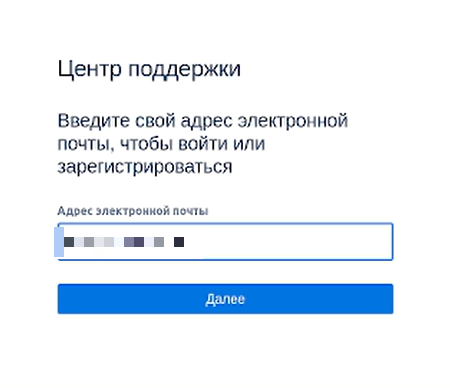
List of Solvable Issues
After logging into the technical support portal, users will be presented with a new window offering various assistance options.
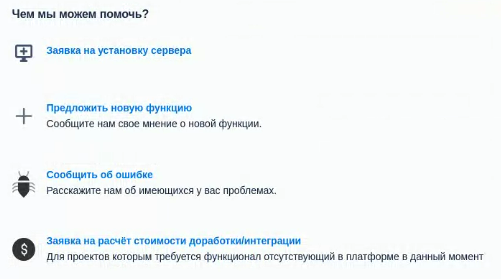
The list includes the following options:
- Server installation request
- Suggest a new feature (with an option to report a new feature)
- Report a bug (notify technical support about an existing issue)
- Request a quote for customization/integration (for projects that require functionality currently not available on the platform)
"Report an Error" Section
The "Report an Error" section is key and most frequently used by users. Due to a lack of knowledge about the rules for working with this category, problems arise in the interaction between users and technical support specialists.
After entering the "Report a Bug" category, users are directed to a new page where they must fill in information about the problem.
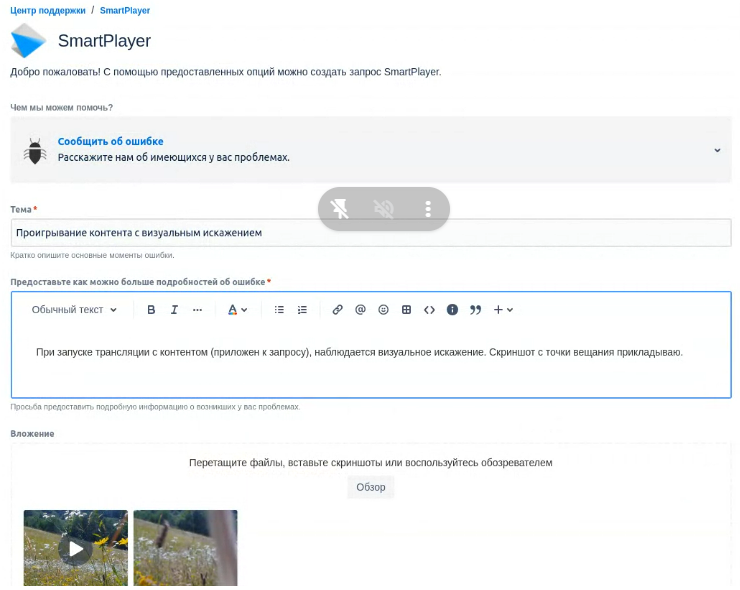
The information to be filled in includes:
- Subject (brief description of the problem)
- Error details (providing more comprehensive information about the error)
- Attachment (option to add various files that can help identify and understand the error)
- Share with (allows sharing information about the problem with another user)
- Project name
- Impact (choice based on the level of impact on the system)
- Detailed description (includes details about the problem and steps for its reproduction, expected result, actual result)
- Operating system (needs to be selected from the provided list)
- Server type (needs to be selected from the provided list)
- Test environment (specifies the version of the application being used)
- After completing all the data on the page, users need to click the "Submit" button at the bottom of the page.
Created Request
After clicking the "Submit" button, the user's page will refresh, and a request with the previously collected information about the problem will appear.
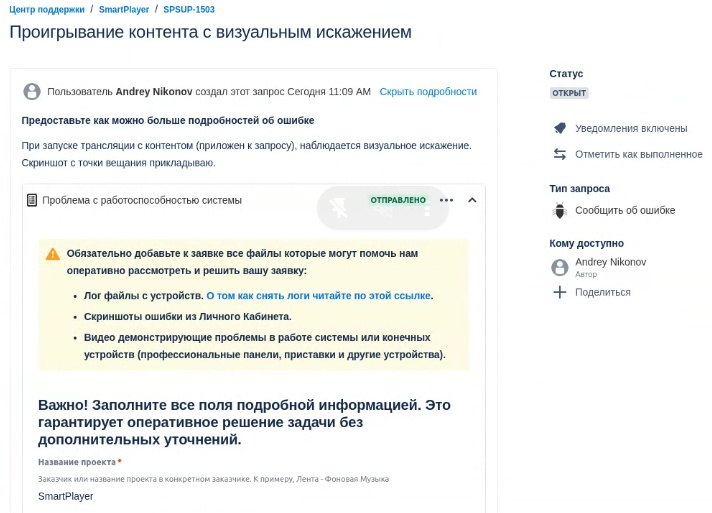
The user can interact with the request and, for example, close it immediately if it was created accidentally or if the information in the request is incorrect. To do this, they need to move to the right side of the screen and click on the "Mark as Completed" line.
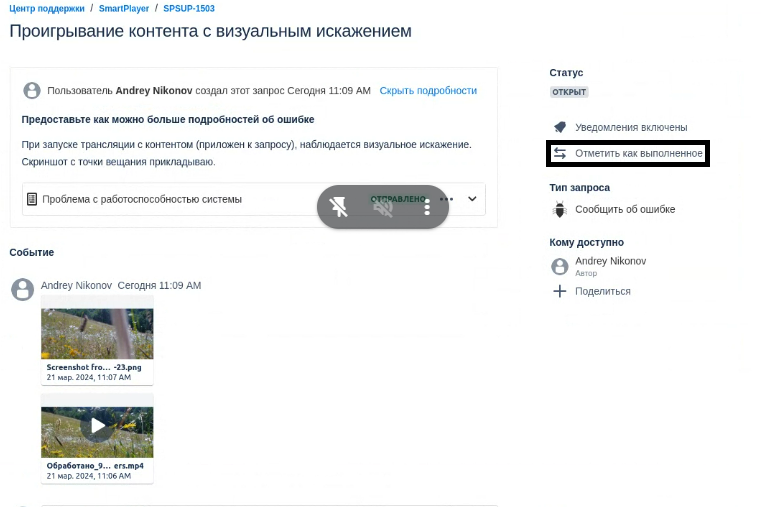
Ticket ID (Request ID)
After creating a request, it will be assigned its own unique number in the system, referred to as "ID". With this ticket ID (request ID), the technical support specialist will be able to find the user's request.
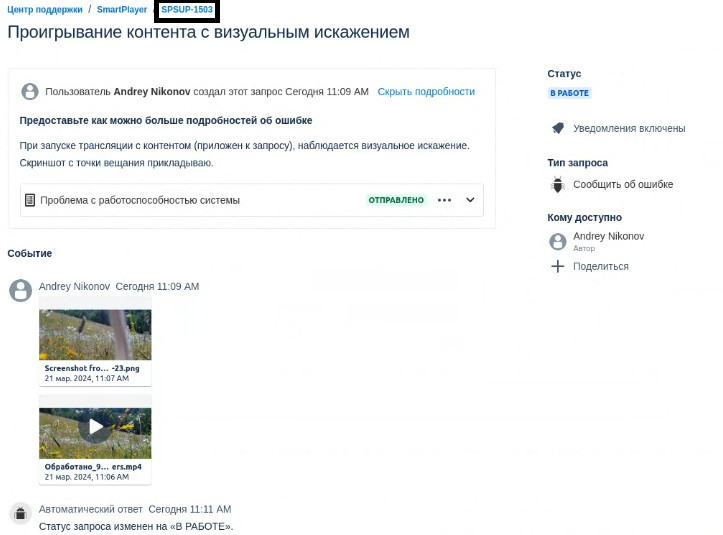
Examples of user questions:
A good question that can receive a prompt response about the problem:
"Good day, could you tell me the status of the issue SPSUP-1503?"
An unsuccessful question, the answer to which may not be prompt and may require additional information from the user:
"Hello, what's the status of the error with Samsungs?"
Ticket (Request) Statuses
The statuses of a request are displayed at the top right of the user's request.
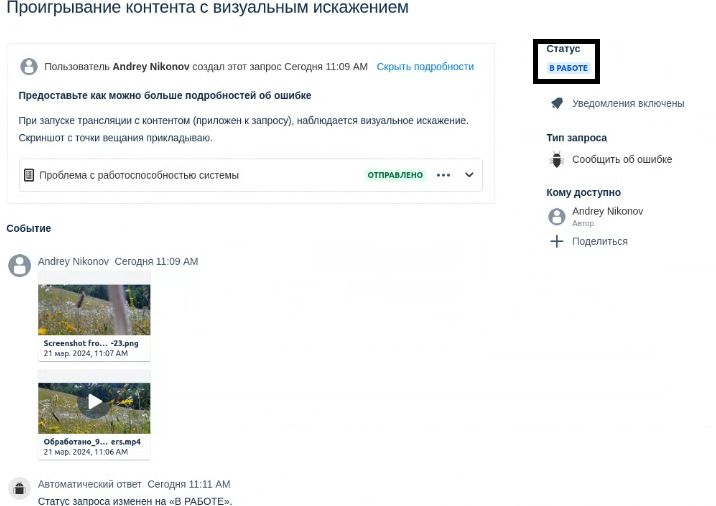
The following statuses exist:
- Open - the request is open and work is expected to be done.
- In progress - the technical support specialist is currently working on the request and searching for a solution to the problem. Please wait for a response to this issue.
- Awaiting development - an error in the application's source code has been confirmed. Waiting for a fix/improvement from the development department.
- Pending - indicates waiting for the solution to be implemented on the SmartPlayer platform side.
- Awaiting feedback - indicates that the technical support staff is waiting for feedback from the user after carrying out the necessary actions that were supposed to solve the problem.
After Receiving "Awaiting Feedback" Status
If the problem was not solved, the user can click on the "Reopen Task" line and write a comment in the window that appears.
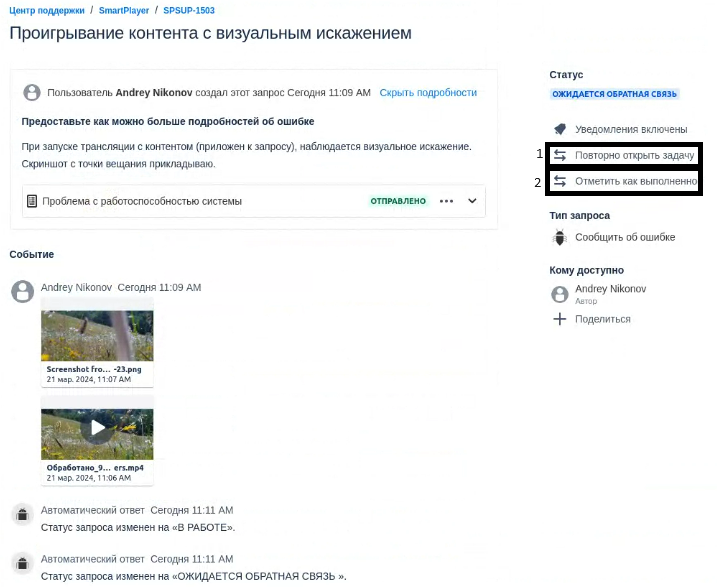
- Reopened - is set by the system if the request with the issue was not resolved according to the user.
- Completed - the task has been processed by the technical support specialist, and the proposed solution has resolved the user's problem.
Lack of Response in "Awaiting Feedback" Status
If the user does not leave a comment after the technical support specialist has set the "Awaiting Feedback" status, then after two weeks (14 days), the request will be automatically closed by the system. That is, the system will automatically change the request's status to "Completed".
Quality Assessment of Interaction with Technical Support
Within a few minutes after the completion of work on the request (receiving the "Completed" status), the user will receive an email asking them to rate their interaction with the support team (on a five-point scale). Clicking on any rating will take the user to the technical support portal, where they need to re-rate (on a five-point scale) and comment on their experience with the technical support team. The comment left by the user will help improve interaction with technical support.
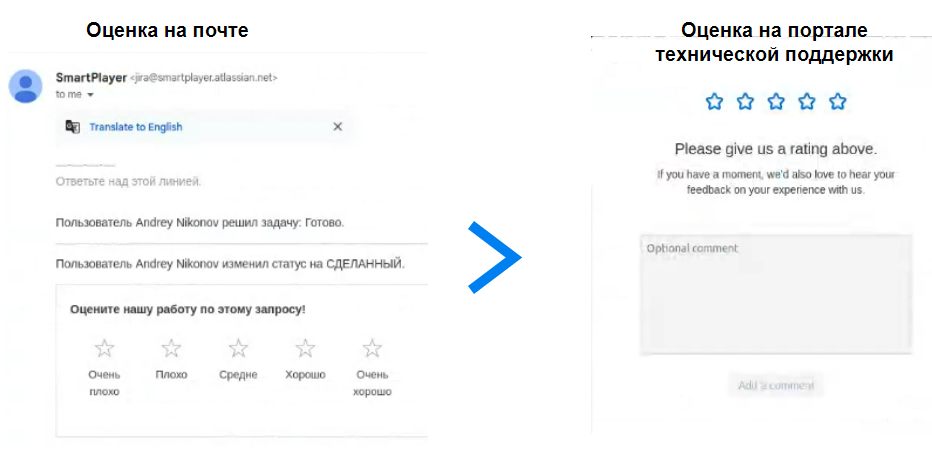
Final Outcome
Users know and understand how to interact with the technical support portal and technical support specialists. They understand the rules and procedures for correctly resolving user errors.